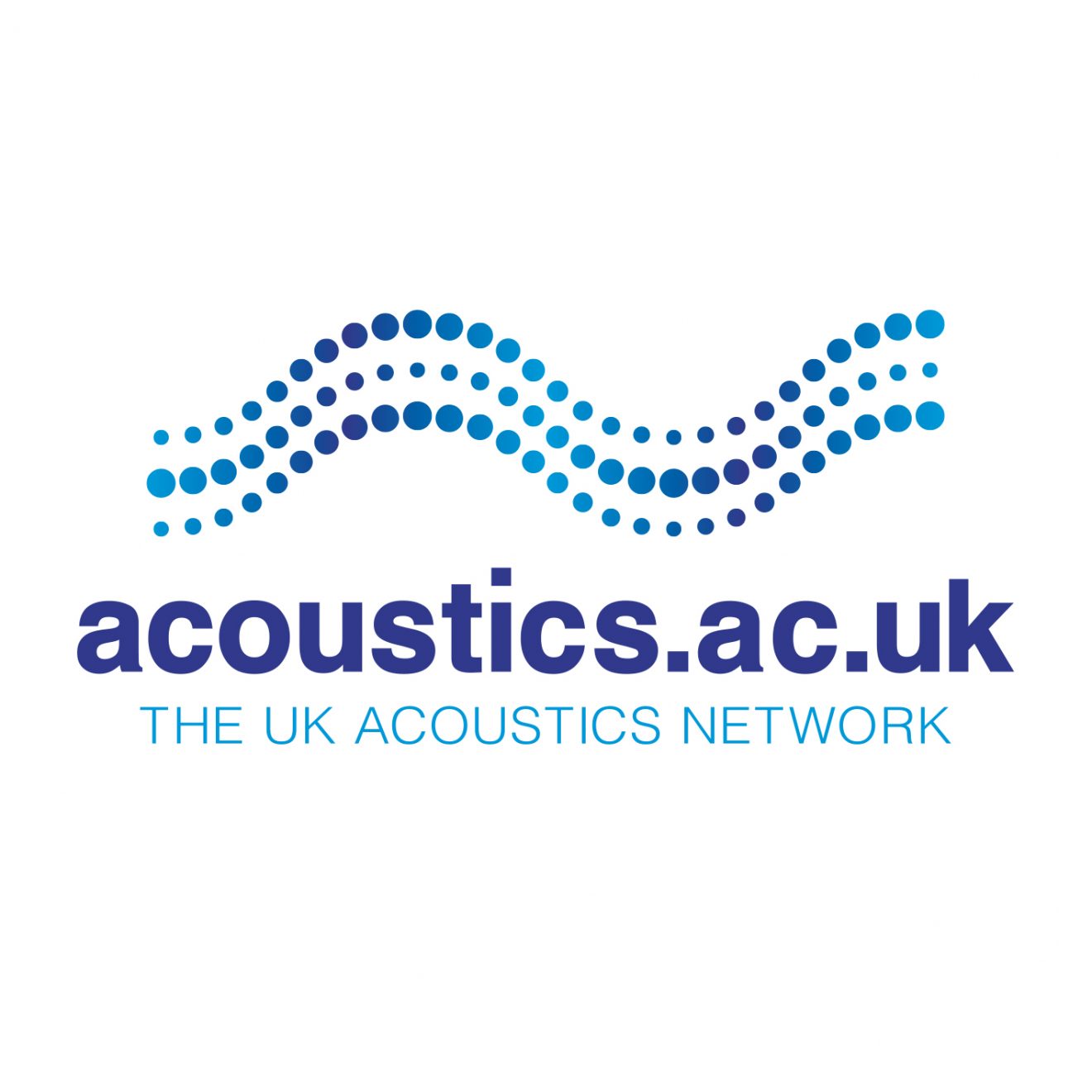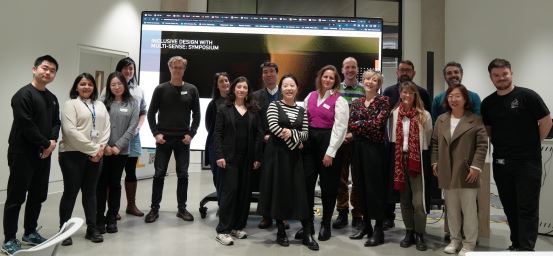
|
|
Welcome to our June newsletter, a range of news from across our network reflecting and informing our community.
|
|
|
|
|
|
|
|

|
We are please to announce our speakers
|
- Russell Richardson, Chair of the Association of Noise Consultants and founding Director of RBA
- Tryfon Antonakakis, Co Founder and co-CEO at Multiwave Technologies
- Dominique Kleyn, MBA Imperial College London
- Valerie Pinfield, Loughborough University
- Hasina Begum, University of Warwick
- Alistair Somerville, Institute of Acoustics
- Tony Walker, Innovate UK ICURe programme
- Orchisama Das, Sonos Inc
- Andy Lawrence, EPSRC (TBC)
We do hope to see you there!
|
|
|
|
|
|
|
As we informed you last month, over the coming months Dr Elaine Massung (Academic Smartcuts) and Professor Dan Allwood (Peak Writing) will be busting common proposal myths each month within the UKAN+ newsletter.
|
|

|
The journey to a successfully funded proposal can be seen as a path. For a lucky few, it’s a straightforward route from A to B. But for most researchers, there are twists and turns, dead ends, and the need to double back.
|
As trainers who help researchers navigate the funding process, we have come across numerous myths, misconceptions, and mistaken beliefs over the years. In an incredibly competitive funding landscape, these myths serve as pitfalls and obstacles that can negatively impact a PI’s chance of successfully reaching their destination of a funded project. Throughout the next year, we will be sharing a few of the most common myths that could send you down the wrong trail.
|
MYTH #1: The only thing that you need for a successful proposal is a good idea.
|
The truth is that competitive proposals have three elements:
|
|
· A good idea. Quality is the primary assessment criteria at EPSRC. The novel research you intend to deliver needs to include a robust methodology and be genuinely feasible. Reviewers recognise that success is never guaranteed, but they need to have confidence that your project will deliver something of value if it is funded.
|
|
· Clear communication. A proposal must be understandable to the reviewer. The need for the research and the difference it will make in the world if the research is successful must be clearly articulated. Reviewers aren’t mind readers and a grant proposal isn’t an IQ test: straightforward language will always trump overly complex or convoluted writing.
|
· Understanding of the funding system. It is your responsibility to understand what each funder and funding scheme you apply for requires. It is necessary to get comfortable investigating the funder’s strategy and the reviewer guidance as well as ensuring that you’ve followed all of the funder’s instructions.
|
Nothing can guarantee a successfully funded project. But recognising the gaps you have and identifying the actions you can take to fill them will bring you closer to the finish line.
|
|
|
|
|
Basic Auditory Science 2023 meeting
|
|
21st and 22nd of September 2023
|
|
Dyson School of Design Engineering at Imperial College London
|
|

|
This meeting is potentially relevant to anyone in the UK and the world who has an interest in the science of Hearing, Acoustics and Audiology. The ethos of the meeting is to facilitate the friendly exchange of work and ideas, while providing an excellent value for money.
|
|
|
|
|
Symposium: Sound, inclusive design and other senses
|
|

|
On the 14th of April 2023, a symposium was held at the STEAMhouse Birmingham on “Inclusive Design with Multi-senses”, supported by the UKAN+. Inclusive design, referring to the Design Council, is an approach to designing products, services, and environments that considers the needs and abilities of a diverse range of people. Taking a multi-sensory perspective, what adds to the inclusive design agenda and values? What is the role of sound in this integrated approach? How to approach inclusive design with multi-senses? Addressing these questions, Dr Jieling Xiao from Birmingham City University and Dr Francesco Aletta from UCL invited a group of leading scholars in the sensory studies field to share their thoughts.
|
Professor Charles Spence from the University of Oxford re-introduced the concept of sensotypes and sensory spectrum. Dr Victoria Bates from the University of Bristol uncovered historical noise surveys in hospitals and questioned whose voices were heard and whose were excluded. Prof Jian Kang shared multiple case studies on the cross-modal perceptions between sound and other senses in the built environment. Dr Carolina Vasilikou from Manchester Metropolitan University shared methods of sensory wayfinding with underrepresented groups. Dr PerMagnus Lindborg from Hong Kong City University introduced a new methodological framework in the Multimodal Hong Kong (MMHK) project to document soundscapes and smellscapes of places for cultural heritages in HK. Prof. Jonathan Reinarz from University of Birmingham revisited the Odour Preference research by Robert Moncrieff in 1966 with new insights. Dr Antonella Raddichi from Birmingham City University shared the inclusive design agenda for artificial lighting in urban public spaces. Dr Cecilia Bembibre shared the smell heritage framework and the latest work by Odeuropa network. Dr Dmitrijs Dmitrenko from the University of Sussex showed innovative ways that olfactory perceptions are considered in automotive design to be explored in the built environment settings.
|
A mini-exhibition called “The Dual City Multi-sensory Experience of Markets” offered an interactive experience of the everyday sounds and smells in the Birmingham Bullring Markets and Shek Kip Mei Estate Market in Hong Kong through objects, interviews and open-access documentaries. The symposium ended with a co-design workshop facilitated by the STEAMhouse Innovation manager Harry Conway providing a new method for delegates to understand the sensory needs for specific “sensotypes” and produce “sensolutions” for specific spatial scenarios.
|
Among the various senses, sound assumes a leading role in this context. Sound not only serves as a means of communication but also provides essential information and cues for navigation, safety, and engagement. Inclusive design that incorporates sound considers the diverse needs of individuals and promotes an environment where everyone can participate and thrive. By recognizing the significance of sound and harnessing its potential, designers can create inclusive spaces and products that cater to a broader spectrum of users, fostering a more equitable and accessible society.
|
|
|
|
|
Computational Acoustics in Industry Sandpit
|
|

|
On 24th and 25th April, the Computational Acoustics Special Interest Group (CA-SIG) ran a sandpit event to promote academic engagement with industry. The sandpit aims to foster new collaborative research that generates novel ideas for solutions to real-world acoustic problems. Three industrial challenges were presented: two from the engineering firm Arup and one from the audio design firm Meridian Audio. Arup’s challenges were on noise barrier performance and wind noise over facades. Meridian Audio posed a challenge on simulating loudspeaker drive units.
|
The event began with each challenge being presented by the relevant industrial partner – these presentations were each followed by some informal time for questions and lively discussion with the audience. After a networking lunch, the academics present gave presentations on their own expertise and previous work enabling the industrial partners to gauge whose research could be of most use to them. An event dinner was held at Zizzi Central St Giles that evening.
|
|
The second day involved a more informal setting where three adjacent breakout rooms were used. One room was allocated to each industrial partner to hold 1-to-1 discussions with academics on opportunities to collaborate. A UKAN Knowledgebase Hackathon session took place in the third breakout room (alongside the tea/coffee and snacks) working on further developing the content in the Knowledgebase. A short plenary wrap session along with lunch closed the event. Post sandpit feedback has been sought from the participants and further discussions about hosting follow-up events ongoing. If you are an industry partner who would like to consider presenting a challenge to academics working on computational acoustics SIG please do not hesitate to contact the CA-SIG leadership team via computational@acoustics.ac.uk.
|
|
|
|

|
|
|
|
|
June Events across the network
|
|
|
|
|
|
|
Acoustics 23 Sydney 4-8 December 2023
|
|
Abstract Submission and Registration Now Open. Deadline for abstract submission is 24 July 2023. For information on abstract submission follow the links from https://acoustics23sydney.org/
|
|
|
|
|
|
We aim to keep you informed and promote any new funding among our members. If you are aware of a grant we have missed, please do drop us a line.
|
|
|
|
|
If you have any news for our July newsletter do drop us an email before the 27th of June. We are interested to hear a range of news, perhaps you have a recent publication, or you would like to offer a blog for our community or maybe you know of some industry news we could share.
|
|
|
|
|